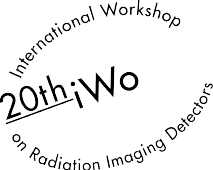Speaker
Description
Although planar silicon sensors are commonly used for X-ray detection, they currently cannot be used by single photon counters at low energies due to their electronic noise being too high. A 1 keV-photon for instance, creates less than 300 electron-hole pairs. In this case, single photon counting detectors would require a noise lower than 30 electrons, which is still unachievable, and are therefore unusable in the low energy range. For soft X-rays, Low Gain Avalanche Detectors (LGAD), which amplify the signal in the sensor, are suitable to overcome this limitation.
Microstrip LGAD sensors, fabricated at FBK, are under investigation with X-rays of energies down to a few keV using both the Gotthard (charge-integrating) and the Mythen (single-photon-counting) readout chips. The LGAD sensors are 50 µm thick and have a strip-pitch of 150 µm, which is however not optimized for applications in photon science. Instead of a homogeneous layer, the charge multiplication region (also known as gain region) of the sensor is only below the implantation of each strip, with electrons being collected by the readout strips.
We found that X-ray photons with energies below 3 keV can be detected using the LGAD microstrips, suggesting a significant improvement compared to the minimum detectable energy of 8 keV of a planar silicon sensor of the same not optimized geometry.
The gain, electronic noise, signal-to-noise ratio as well as the fill factor of the sensor were characterized as a function of the bias voltage of the sensor and the results agree with simulation and design parameters.
The measurements show that LGADs are a promising technology for photon-counting detectors and fast charge-integrating detectors with the capability to decrease the minimum detectable photon energy.
We will present the first results of the characterisation of the LGAD sensors with X-rays and discuss the future developments based on the study of this work.




